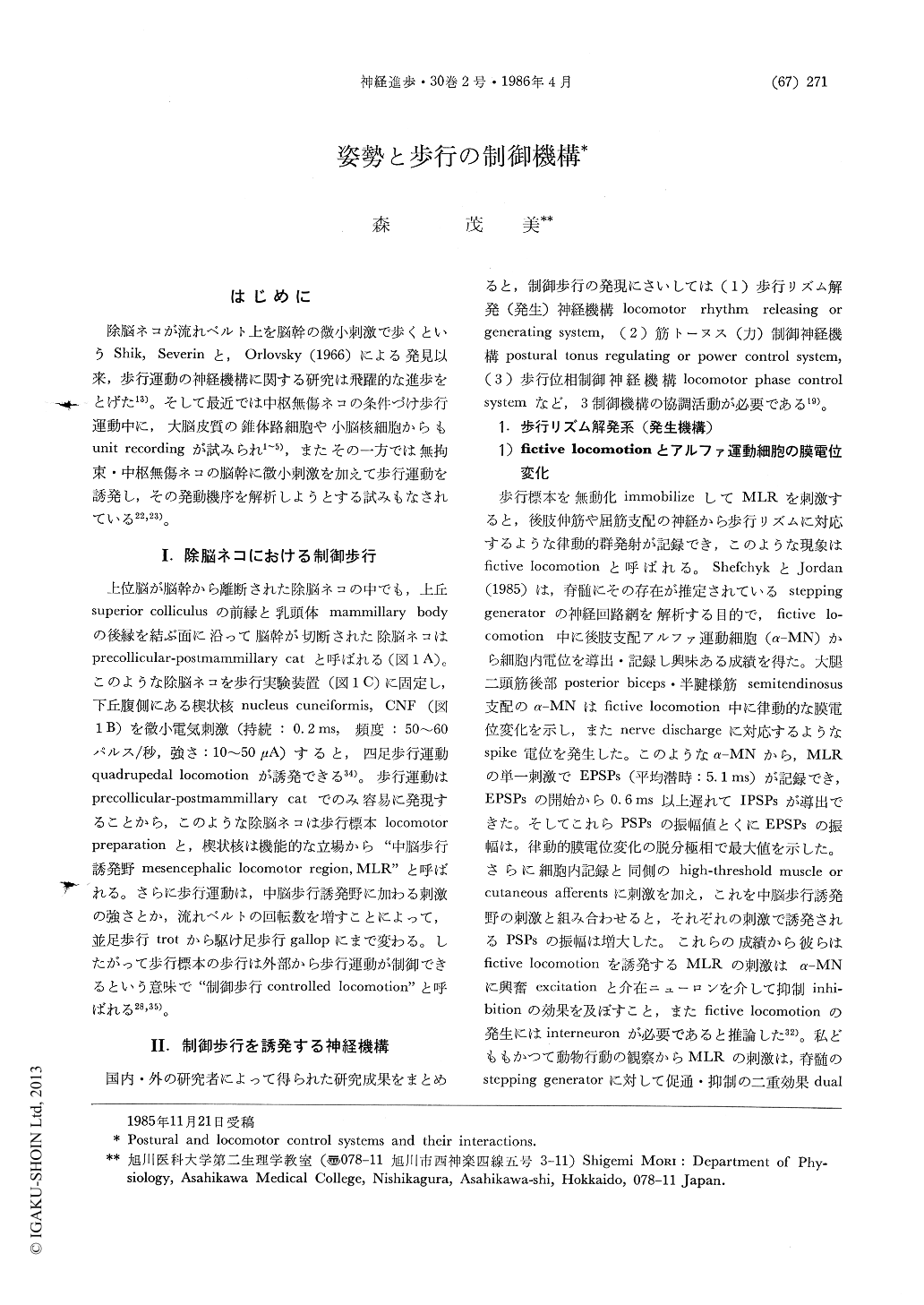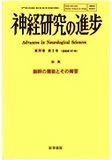Japanese
English
- 有料閲覧
- Abstract 文献概要
- 1ページ目 Look Inside
はじめに
除脳ネコが流れベルト上を脳幹の微小刺激で歩くというShik,Severinと,Orlovsky(1966)による発見以来,歩行運動の神経機構に関する研究は飛躍的な進歩をとげた13)。そして最近では中枢無傷ネコの条件づけ歩行運動中に,大脳皮質の錐体路細胞や小脳核細胞からもunit recordingが試みられ1〜5),またその一方では無拘束・中枢無傷ネコの脳幹に微小刺激を加えて歩行運動を誘発し,その発動機序を解析しようとする試みもなされている22,23)。
To initiate and terminate locomotor movements both in the biped and quadruped, a smooth transition from and to standing is necessary, standing being another active motor behavior. Such a transition is possibly established at least by two different control mechanisms; one is "neuromechanical" or "automatic" control mechanisms and the other "volitional" control mechanisms. The decerebrate locomotor preparation seems to be mainly provided with automatic control mechanisms for the regulation of both posture and locomotion. Under appropriate circumstances, it exhibits machine-like locomotor movements with necessary postural adjustments. In contrast, an intact cat without any restraint is able to circumbent all obstacles and anticipates necessary conditions, and deals with unexpected purturbations by means of reflex adaptation of posture. For locomotion, therefore, functional integration of neuronal structures involved in postural control and locomotor control is desirable. Thus, the question arises as to whether or not separate systems exist for postural control and for initiation of locomotion. Sherrington (1910) formulated this problem as "posture follows movement like a shadow". However, a relatively little infor-mation has been available as to the interactions between posture and locomotion.

Copyright © 1986, Igaku-Shoin Ltd. All rights reserved.


